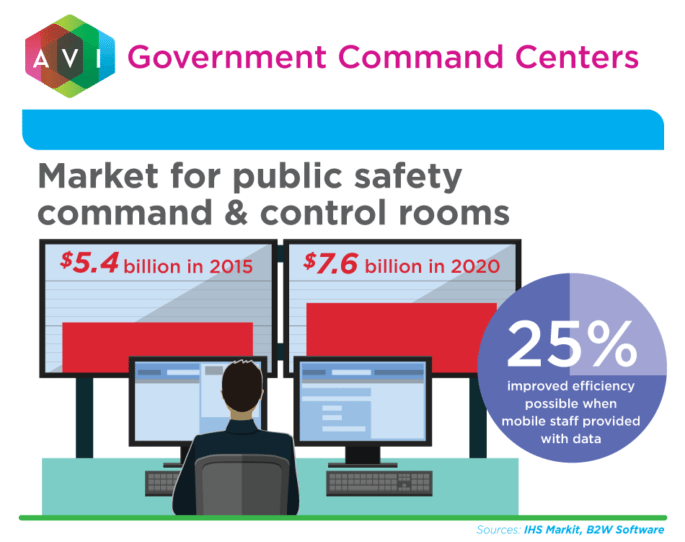Control and command centers should always have the best technology. However, when their purpose is to monitor and manage public safety, communication is crucial.
Command and control rooms need to work under hectic, high-use conditions. The equipment usually needs to run all day, every day. Users are often under extreme pressure, and the stakes can be high.
Police, highway centers, fire departments, and the like need to be able to transmit and receive information and data quickly and accurately. Whether it’s communication with technology or workers in the field, the command center is vital to ensuring everyone has the information they need to keep the public safe.
In the coming years, evaluating and updating command centers could be a must for many industries as new technology enters the market.
The command and control room and public safety answering point market is on track to grow to $7.6 billion by 2020, according to IHS Markit, a world leader in critical information, analytics and solutions. That’s an expected $2.2 billion increase from 2015 to 2020.
The trends driving this growth centralizes around public safety initiatives, technology integrations and command center consolidation, and increased value on big data.
Alexander Richardson, market analyst for critical communication at IHS Markit, said in a statement that more technology entering the control room market has also been a factor in prompting much of the growth expected ahead.
“While growth in the public safety sector — the control room market’s largest industry — has recently been stagnant, we expect strong growth over the next four years,” Richardson said in a press release.
With technology constantly changing, command centers must be ready and able to transform and evolve as new needs arrive. Some must-have capabilities are real-time monitoring and configuration flexibility.

Improving Command Centers' Capabilities
Many command centers have been able to decrease response times of first responders, while highway departments have been able to react to emergencies faster.
Other important capabilities include:
- Mobile video
- Enhanced mapping
- Touch panels
- Real-time data access
These capabilities improve communication and services for those in the command center, public servants out in the field, and the public at large.
A professional integrator can ensure that control facilities are designed and equipped to meet the needs of your organization.








